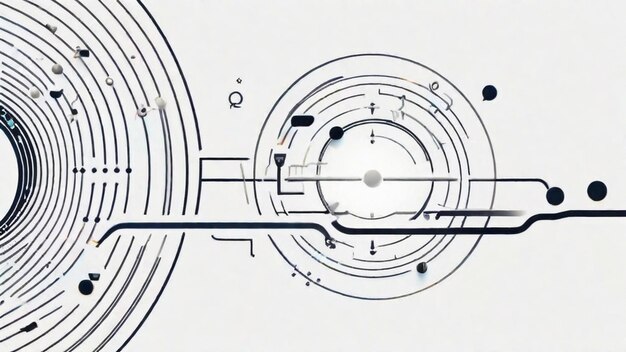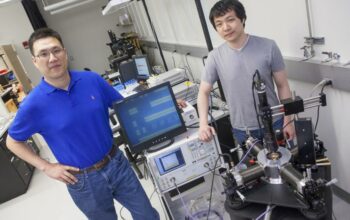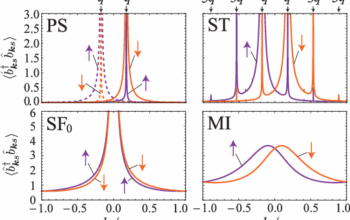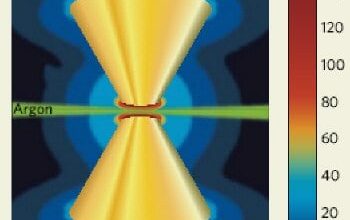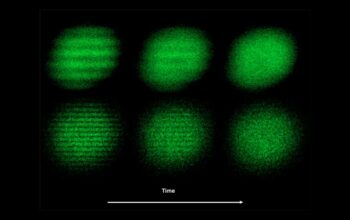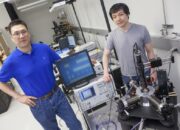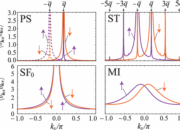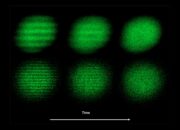In the realm of quantum mechanics, time takes on a peculiar character. Unlike the linear perception of time experienced in the macroscopic world, at the quantum level, phenomena can transpire in a precariously fleeting moment. The study of these minute intervals ushers us into an arena where electrons, as fundamental components of matter, emerge as the quintessential timekeepers of the quantum world. How, then, does one measure their frenetic ballet in a timeframe as short as attoseconds? This question anchors our exploration into the cutting-edge domain of electron dynamics.
The attosecond, a time unit representing one quintillionth of a second (10-18 seconds), allows us a glimpse into the rapid processes that govern electron behavior. The typical electron, envisaged within the confines of an atom, does not rest. Instead, it dances around the nucleus with an energy that is both captivating and tumultuous. The challenge lies in achieving a temporal resolution sufficient to track these dynamics accurately. Traditional measurement techniques are rendered impotent at such minuscule scales, where the interaction between light and matter must be harnessed innovatively.
One approach to this challenge is through the utilization of attosecond pulse lasers. These lasers can generate bursts of light so brief that they permit the observation of electron motion in real-time. The phenomenon can be likened to capturing a bullet in mid-flight; the accomplishment appears far-fetched but is scientifically feasible. In this context, attosecond science emerges as a revolutionary field, unveiling processes previously cloaked in temporality that transcends human comprehension.
Consider, for instance, the quantum tunnel effect. Within this paradigm, electrons exhibit a capacity to traverse barriers that classical mechanics deem insurmountable. The essence of this tunneling can be dissected through the lens of attosecond measurements. By directing laser pulses at atoms, researchers have successfully demonstrated that electrons can be nudged out from their native states into transient states—phenomena that occur on scales necessitating attosecond precision.
This leads us to ponder: if electrons are the timekeepers of the quantum world, what secrets do their rapid oscillations reveal about the very fabric of reality? Investigating this intertwines with the broader implications of quantum mechanics, specifically the interplay between time and causality. Each attosecond measurement not only elucidates the temporal dynamics of electrons but also poses philosophical inquiries pertaining to the nature of time itself. Can time be understood as merely a sequential narrative, or does it embody a complex interplay of events that influence one another in quantum entanglement?
Moreover, as researchers engage with attosecond electron dynamics, they encounter a crucial consideration—the perturbation effect. The act of measuring an electron’s position or momentum invariably alters its state. This conundrum brings forth the uncertainty principle, a cornerstone of quantum theory articulated by Werner Heisenberg. The act of measurement, whilst elucidating the intricate ballet of electrons, simultaneously obscures the full panorama of their movements. Thus, the challenge intensifies: how does one balance the precision of measurement with the inherent disturbances that it induces?
Leading developments in experimental physics employ cutting-edge technology that enhances the scope of attosecond measurements while mitigating perturbation effects. For example, scientists utilize advanced imaging techniques such as streaking—whereby high-frequency fields are used to visualise the motion of electrons. By integrating multiple measurement techniques, researchers not only accomplish unprecedented temporal resolution but also create a comprehensive narrative of electron behavior that encapsulates multiple dimensions of quantum phenomena.
Moreover, the implications of probing attosecond timescales extend far beyond mere academic curiosity. In the domain of quantum computing, understanding electron dynamics on these minuscule timescales could radically transform our computational architectures, granting us unprecedented processing power. Quantum bits, or qubits, susceptible to these erratic electron movements, may one day be harnessed in concert with attosecond technology to pioneer further advancements in speed and efficiency.
The progressive inquiry into the attosecond realm also harbors monumental implications for telecommunications, photonics, and even medicine. As we decipher the language spoken by electrons moving at such breathtaking velocities, we unlock pathways to innovative materials and techniques that could herald an era of exponential technological advancement.
However, much remains on the frontier of this exploration. The yearn to fathom the quantum world in its entirety introduces a plethora of unanswered questions. As consciousness transcends the confines of classical diffusion, the quest persists: what will the deciphered rhythms of electrons, those primal timekeepers, reveal about the universe’s underlying architecture? In seeking to answer this challenge, researchers are not only expanding the text of quantum physics but are also embarking on an odyssey that may rewrite the fundamental principles of how we perceive time itself.
In conclusion, the pursuit of measuring electron movements in attoseconds is emblematic of the broader quest for knowledge within the quantum domain. Each breakthrough in attosecond technology not only hones our understanding of atomic and subatomic processes but also propels us toward conceptual realms that fuse the disciplines of physics, philosophy, and technology. This profound intertwining of theory and application encapsulates the essence of contemporary scientific inquiry, where the challenge is not merely in measurement but in deciphering the mysteries that lie within the very heart of time.
